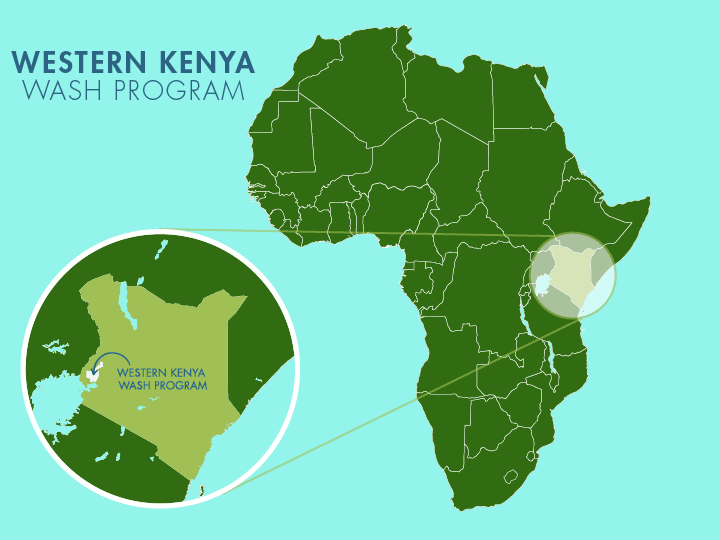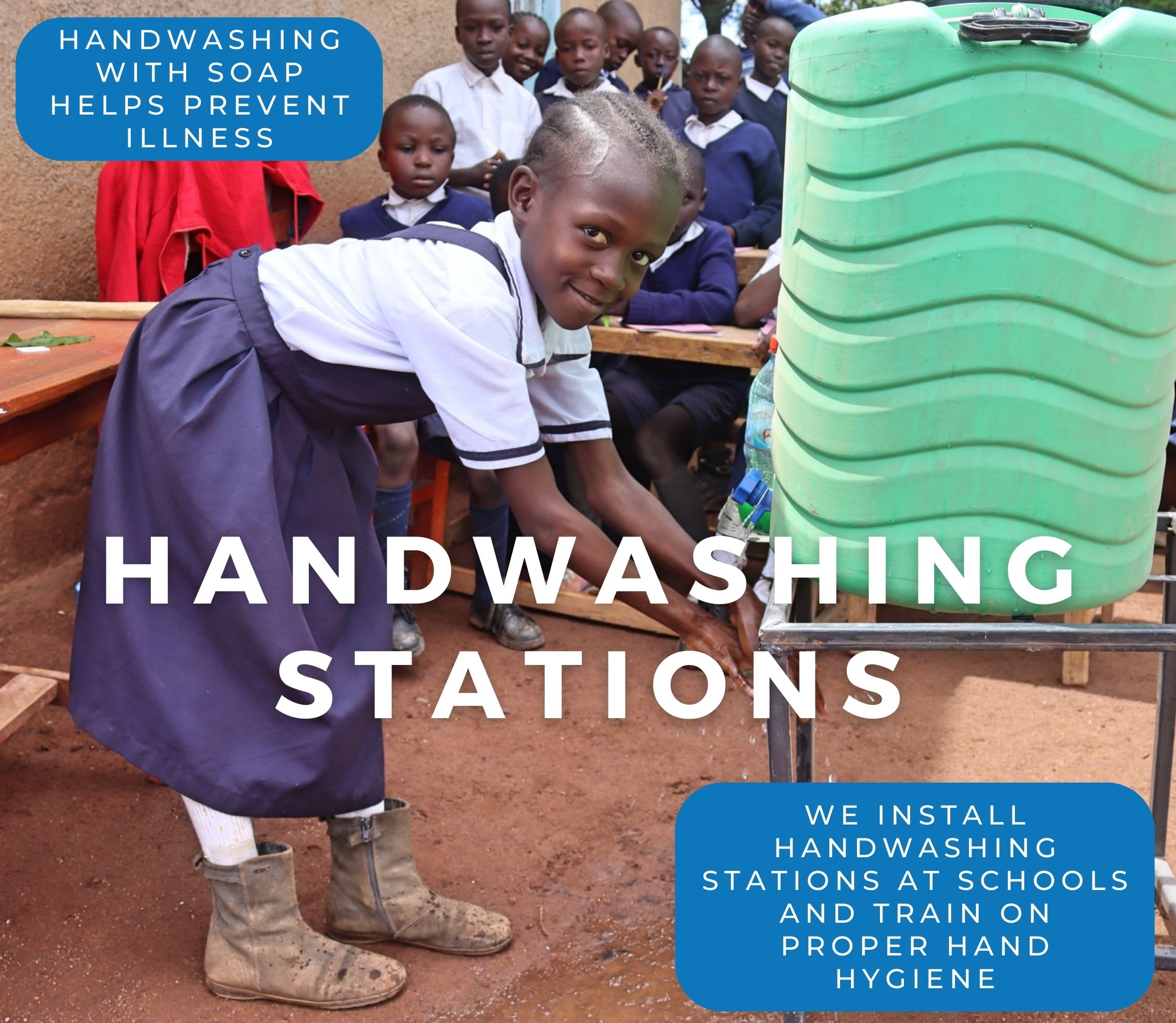The 26 clinical staff members of Hamisi Sub-Country Hospital strive to provide professional medical services. Still, without reliable, safe water, their service to an average of 130 patients a day is both exhausting and disheartening.
The hospital relies on only two unstable water sources: rainwater collection and a municipal piped water system outside the facility gates, which supplies water to the center when it is operational. Both options are sporadic at best and lead to expenses the hospital staff don't have the resources to cover when the pipes break down or the tanks run out, forcing them to purchase water. It is an overwhelming position for the staff to be in. They have sworn to care for others and are trying their best with what they have, but the situation leaves them and their patients vulnerable.

Patients waiting for care.
Field Officer Nelly Chebet described the situation further.
"Both the rainwater and the piped water are not reliable sources of water to this facility. It has now [been] about five months, and the piped water is not functional due to [a] breakdown, which needs a lot of finances. After a few days, it breaks down [again], which is so expensive to the facility. They are forced to buy water for both drinking and cleaning, which is also expensive to buy enough for both staff and patients," she shared.

Water is essential for drinking and hand washing.
"They have been buying water from the county water department, which is quite expensive and not enough to be used by both the patients and the staff," Nelly continued.
When water can be collected during rainy periods or when the piped water is flowing, the staff's problems are not over. The water is often contaminated, causing more havoc than relief.

Public Health Officer Robinson Mugondi by the too-small rain tank.
"Typhoid and diarrhea cases have been reported mostly by the staff of this facility and the community members around the facility. This is due to consumption of contaminated water," Nelly lamented.
Public Health Officer Robinson Mugondi, 34, is one of the staff members caught in the vicious cycle of water scarcity.

"There are times we compete with patients over water for use. At such a moment the management gives priority to patients and at one point we are harrassed [if we] use it due to [the] low amount of reserved water. At the end, as a human, I feel disappointed," he bravely shared.
We asked Robinson how the water shortage impacts the services he can provide. He said, "Life becomes hard; difficulty in bathing for patients, difficulty in accessing water for drinking and domestic use for staff. Difficulty bathing and handwashing for inpatients can lead to diseases caused by germs. More so, difficulty in taking drugs, especially [for] patients who have to take their drugs."

Water is needed for laundry services.
Robinson understands that water is essential for delivering excellent patient care. We asked him how access to water would change things. He said, "Improve patient care and outcomes, which will lead to a healthy life. Improved general hygiene of the facility, minimizing [the] spread of diseases. Clinical personal hygiene will greatly improve, thus disease prevention."

Cleaning is an essential requirement for the health center to prevent the transmission of diseases.
"Personal hygiene will [be] greatly improved because water will be reliable. Laundry for the inpatient unit will be cleaned every day, which will lead to [a] conducive environmental [situation]for the inpatient. Lastly, [the] preparation of meals will be done hygienically."
"Installation of a borehole will enable the staff members to provide better care for patients and the other community members who live near the facility who are in need [of] access to safe, clean water to meet their daily needs. Besides that, water-related illnesses will no longer affect both the staff and the community members, which will result in good health," Field Officer Nelly concluded.
Steps Toward a Solution
For health care settings, immediate access to a large quantity of clean water is crucial for handwashing, sterilization of equipment, cleaning, and safe childbirth. Water that is off-site creates delays, impacts patient care, and increases the risk of hospital-acquired infections.
Our coverage goals aim for all health centers to have an on-premises water source that will sufficiently serve the patients, healthcare providers, and staff to ensure accessibility, reliability, and safety. With more water available, healthcare workers do not have to ration water, worry about purchasing water with their limited funds, or make tough decisions about when to wash their hands or equipment.
Reliable, clean water ensures that healthcare workers have sufficient water so they can provide excellent patient care!
Our technical experts worked with the health center leadership and the local community to identify the most effective solution to their water crisis. They decided to drill a borehole well, construct a platform for the well, and attach a hand pump.
Well
Abundant water often lies just beneath our feet. Aquifers—natural underground rivers—flow through layers of sediment and rock, offering a constant supply of safe water. A borehole well is drilled deep into the earth to access this naturally filtered and protected water. We penetrate meters, sometimes even hundreds of meters, of soil, silt, rock, and more to reach the water underground. Once found, we construct a platform for the well and attach a hand pump. The community gains a safe, enclosed water source capable of providing approximately five gallons of water per minute. Learn more here!
Handwashing Stations
Alongside each water source, we install two gravity-fed handwashing stations, enabling everyone at the health center to wash their hands. Handwashing is crucial for preventing water-related illnesses within the health center and community. Health center staff will maintain the stations, fill them with water, and supply them with soap, which we often teach them how to make.
Latrines
We ensure there are Ventilated Improved Pit (VIP) latrine blocks that effectively prevent the transmission of fecal diseases. Each latrine will boast a durable cement floor for easy use and maintenance. We’ll ensure at least one stall is reserved for staff, along with gender-separated toilets that include menstrual hygiene facilities and accessible options for individuals with limited mobility.
Health Care Staff and Community Education & Ownership
Hygiene and sanitation training are integral to our water projects. Training is tailored to each community's specific needs and includes key topics such as proper water handling, improved hygiene practices, disease transmission prevention, and care of the new water point. Safe water and improved hygiene habits foster a healthier future for everyone in the community.
Encouraged and supported by the guidance of our team, a water user committee representative of the community's diverse members assumes responsibility for maintaining the water point, often gathering fees to ensure its upkeep.

 Borehole Well and Hand Pump
Borehole Well and Hand Pump
 Rehabilitation Project
Rehabilitation Project




















